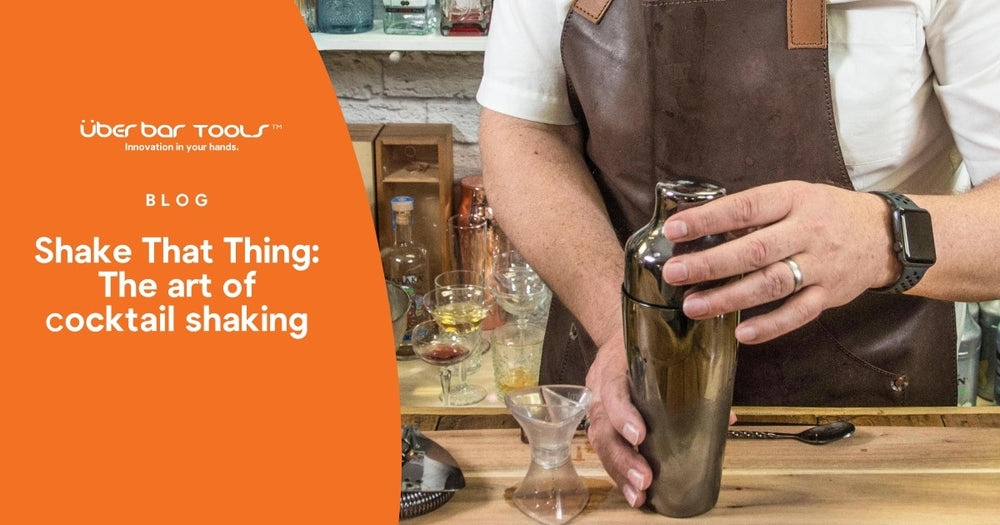
You think we’re kidding, but for bartenders, the risk of injury through repetitive shaking is as real as their sore back and aching feet.
“When they’re shaking a drink, it’s very similar to the motion of a pitcher, a tennis serve or throwing a football,” occupational therapist Lisa Raymond-Tolan said in a New York Times interview.
“It’s the same motion, back and forth, back and forth, rotating up high. You have a heavy weight at the end of the arm, out in the air. It’s not just the shoulder. It’s the wrist as well.”
So, why shake if it’s so perilous? Does it come down to theatrics, or is there more to it?
There’s no doubt that the creation of the cocktail is a huge part of the experience – and shaking creates the most striking impression of all the mixing methods. But not all cocktails should be shaken, some simply need to be stirred.
So Why Should We Shake?
Shaking a cocktail allows for the vigorous integration of liquids of different compositions. The shaker helps create just the right amount of dilution, chilled temperature and, most importantly, aeration when the ingredients are shaken with ice. Shaking a cocktail with ice allows the ingredients to fully mix and chill as well as diluting slightly to get the perfect consistency and taste.
Many bartenders were already “mixing drinks” by the mid 1800s by simply pouring the ingredients back and forth between two glasses, but this was messy, as you can imagine! The first cocktail shaker, made in the familiar shape we know today, was patented back in the late 1800s by Edward Huack in Brooklyn, USA.
Shaking Today
Nowadays, there are three main types of shaker – the Boston, the Parisian and the Cobbler.
The two-piece Boston shaker has a tempered mixing glass and the shaker tin, which snug together with a gentle tap. Also available in this configuration is the ‘Toby Tin’ which can be used instead of the mixing glass. This is the most commonly used shaker in bars today.
The Parisian shaker hails from France in the 1920’s and is also a two-piece shaker, however, the mixing tin and lid are both made of metal. This style of shaker is being more commonly used in bars today.
The Cobbler shaker is a three-piece shaker and has a strainer built in to the lid, but the small strainer in the Cobbler sometimes gets blocked by ice and slows the pouring of the cocktail. The Cobbler shaker is not commonly used in bars due to their smaller size, but are an ideal shaker for the home cocktail enthusiast.
Commonly shaken cocktails include the daiquiri, cosmopolitan and (controversially) the martini. Explore our cocktail collection and try your hands at various shaken cocktails.
Today, Überbartools™ cocktail shakers have been ergonomically designed to suit all hand sizes for a more comfortable shake. They come in beautiful custom colours like platinum black, copper and gold for style with substance.
A perfectly shaken cocktail doesn’t require epic effort. With the right shaker, the science says you need only shake your cocktail for 12 seconds to create optimal cooling and mixing of the ingredients. In other words – don’t let showing off give you shake strain. Let your beautiful shaker do the showing off instead!


